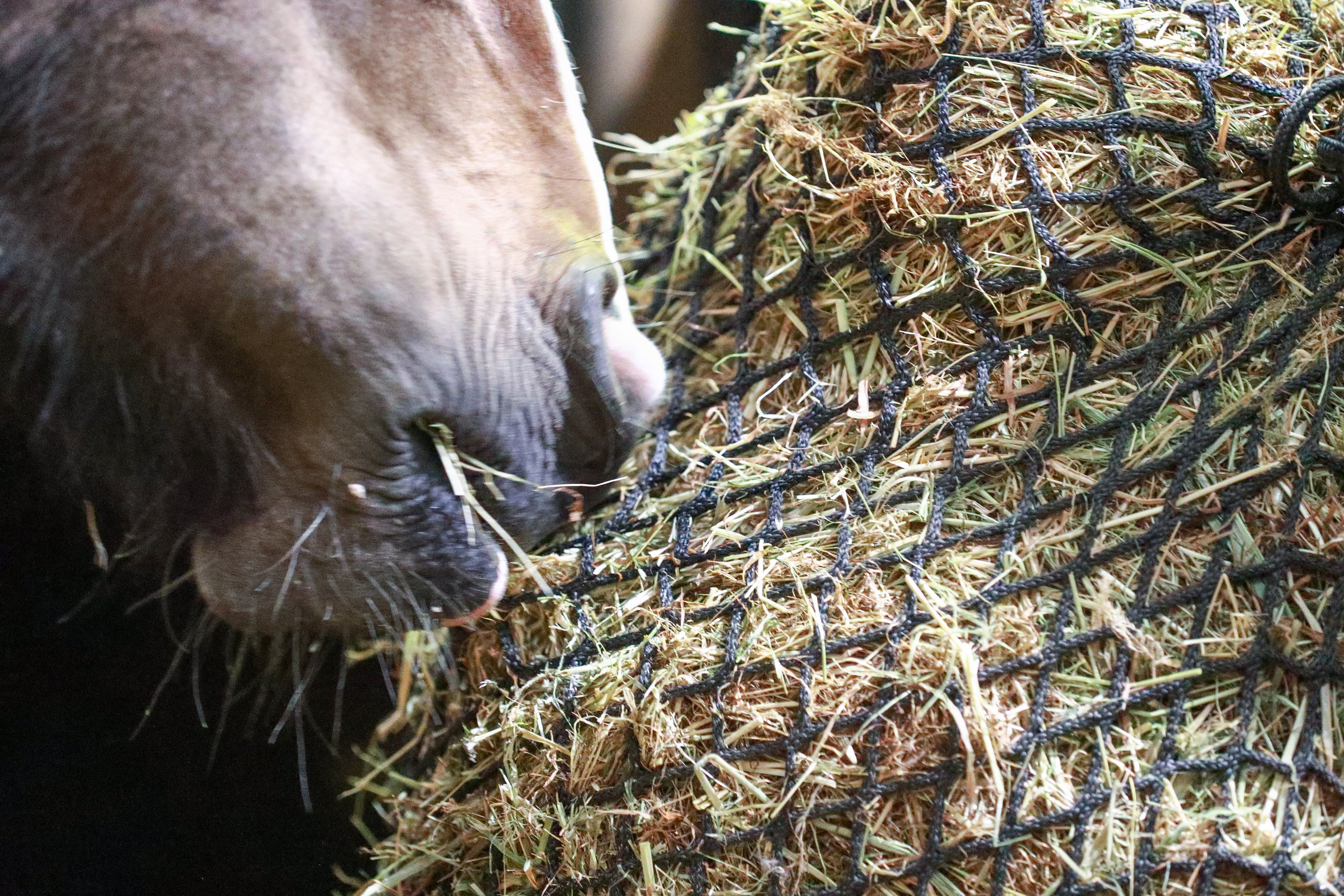
There are many advantages to using a haynet and a size to suit every horse
They offer many practical benefits as well as health benefits, so are well worth considering whenever you need to stable your horse.
Stable Benefits
- Haynets are easily weighed and can be made up in advance, giving you peace of mind so that you know your horse is being given their recommended daily intake of forage.
- Haynets are great for messy eaters and can help reduce wastage.
- Haynets can be placed in multiple locations in the stable encouraging movement and foraging behaviours.
All haynets, large or small holed, bring these benefits. So which net is best?
Did you know?
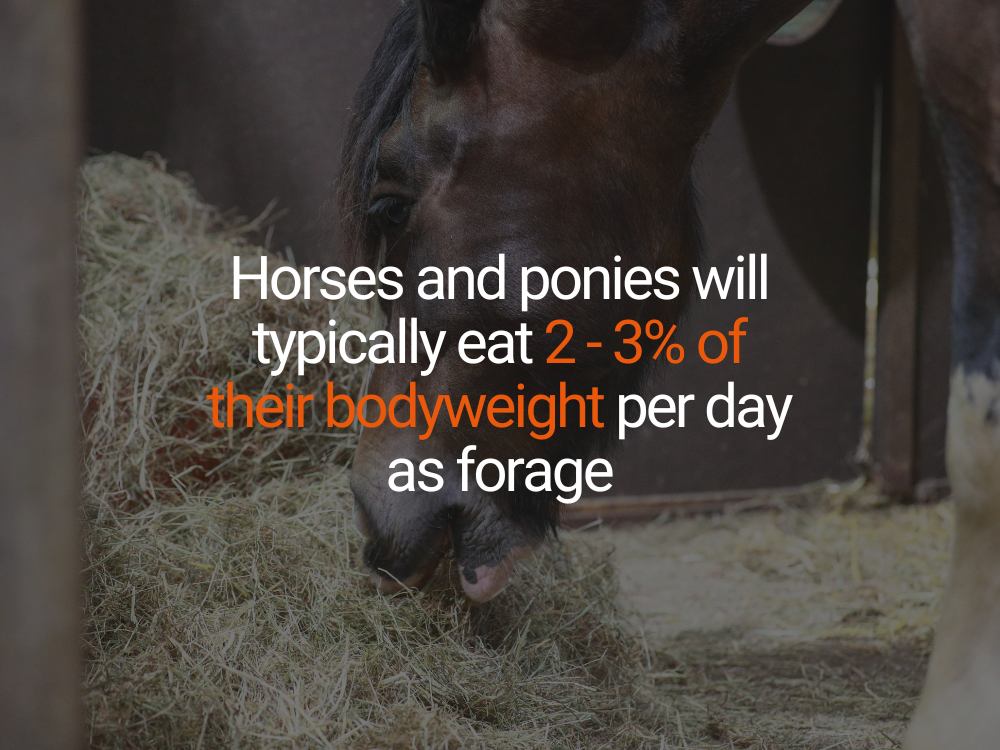
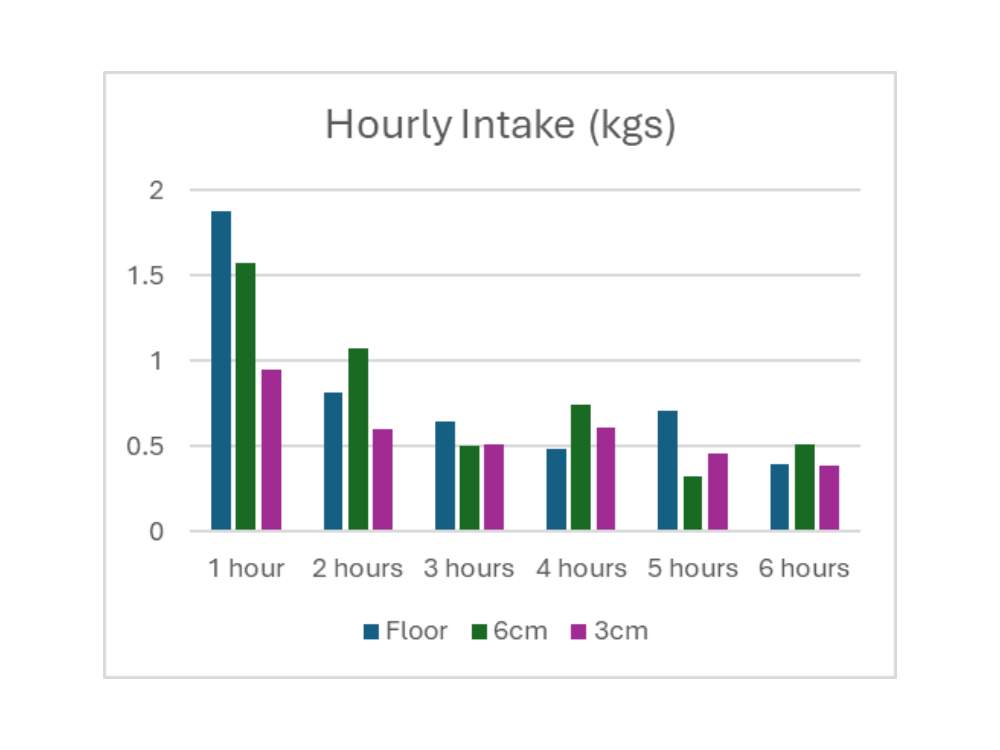
Small Holed Haynet (3cm)
A small holed haynet is ideal for:
- Horses or ponies on a restricted forage diet as part of weight management.
- Horses or ponies that are speedy eaters and whose haynet is often found empty in the morning.
QUESTION
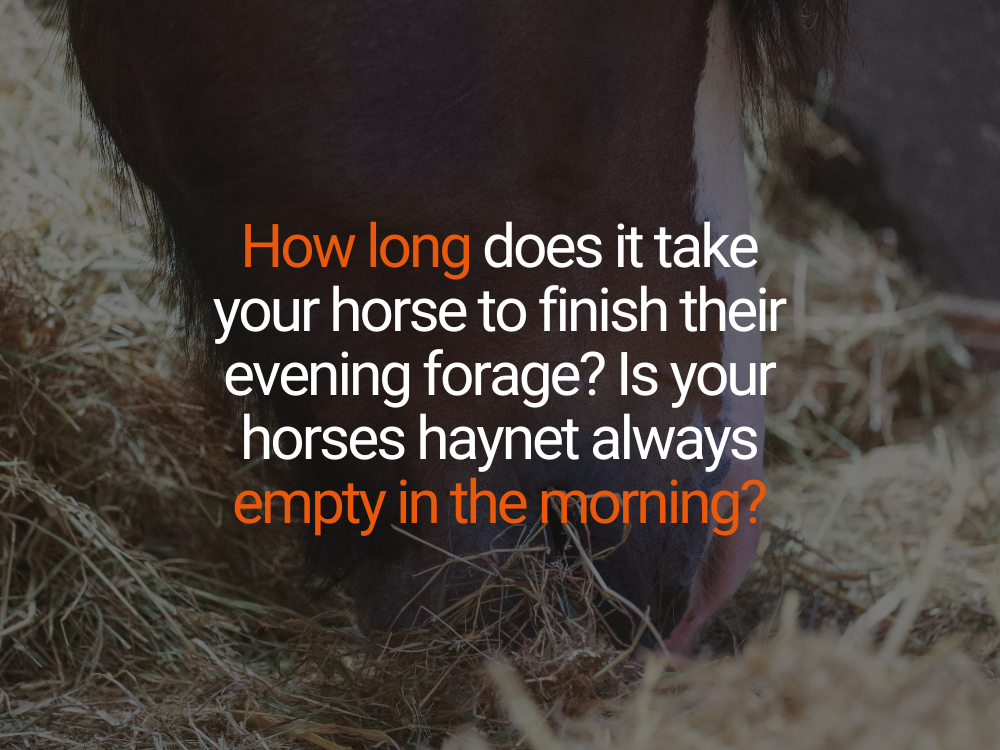
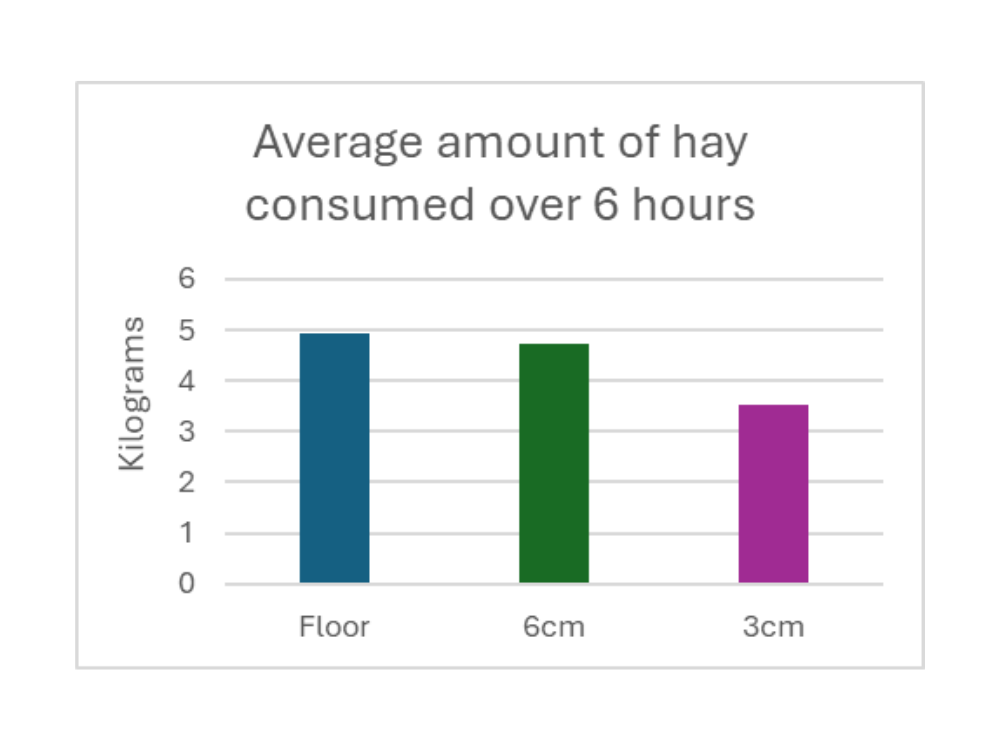
A small holed haynet can help reduce the total amount eaten...

Large Holed Haynet (6cm)
Does the forage source make any difference to hay net choice?
The type of forage offered to a horse can effect the amount naturally consumed. Forage intake can be affected by plant structure, how ‘stemmy’ or high in NDF the plant is, moisture content and sweetness.
Horses are more inclined to eat a higher amount of traditionally made haylage than hay. If you are struggling with weight management or find your horse or pony eats their forage too quickly, and you cannot change your forage source, changing your haynet hole size can help.
|
Source of forage given whilst stabled on a free choice basis |
Dry matter content of forages given | Average kilograms of fresh weight eaten by 500kg horse | % of horses bodyweight on a dry matter (DM) basis |
| Freshly cut grasses | 14-20% | 73 | 2.2 |
| Haylage | 55-65% | 23 | 2.8 |
| Hay | 80-85% | 11 | 1.9 |
| Straw | 90% + | 7 | 1.3 |
What is a natural feeding pattern and why does itmatter?
Haynets are a healthy choice!
Providing a natural feeding program when stabling a horse can be a challenge. But is what is natural?
- Free ranging horses typically show 10-15 distinct feeding bouts in a 24 hour period (1).
- Time spent resting or engaged in other non-feeding activities will not normally exceed 3-4 hours per session (2).
- Time spent on feeding behaviour makes up 60-70% of daylight hours and only 40 -50% of night time hours (3).
- The amount of time spent eating in a 24-hour period is influenced by the time of day and the time of year. Studies of feral horses over 24 hours showed an average
Providing multiple ‘mini meals’ of forage especially over night is not practical. Providing free choice or ad lib forage is the ideal practice, whereby more is given than is needed, to ensure there are no prolonged periods without forage to enable natural behaviour and regulation of the digestive system.
However, free-choice is not an option for all horses and controlling intake is often needed as part of management of or reducing risk of weight related disorders. Horses are the same as many other species and when presented
with a large meal do not have a regular eating pattern, with a large intake happening at the start. For horses on low forage intakes this presents a particular challenge as it increases the amount of time spent without access to forage.
A regular intake of forage is the ideal pattern and this is where a small holed haynet is big help.
Article Written By Catherine Rudenko BSc PGCert RNutr
www.thehorsefeedconsultant.com
References
- ELLIS,A.D.,2010. Biological basis of behaviour in relation to nutrition and feed intake in horses. In A.D. Ellis, A.C.Longland, M.Coenen
& N.Miraglia, ed. The impact of nutrition on the health and welfare of horses. The Netherlands: Wageningen Academic Publishers, 53-74 - 2. Ralston,1984; Vulink,2001, cited in ELLIS,A.D.,2010. Biological basis of behaviour in relation to nutrition and feed intake in horses. In A.D.
Ellis, A.C.Longland, M.Coenen & N.Miraglia, ed. The impact of nutrition on the health and welfare of horses. The Netherlands: Wageningen Academic Publishers, 58. - 3. Vulnik,2001; Boyd 1988; Berger et al.,1999; Edouard et al.,2009 cited in ELLIS,A.D.,2010. Biological basis of behaviour in relation to nutrition and feed intake in horses. In A.D. Ellis, A.C.Longland, M.Coenen & N.Miraglia, ed. The impact of nutrition on the health and welfare of horses. The Netherlands: Wageningen Academic Publishers, 58.
- 4. Vulnik,2001 cited in ELLIS,A.D.,2010. Biological basis of behaviour in relation to nutrition and feed intake in horses. In A.D. Ellis, A.C.Longland, M.Coenen & N.Miraglia, ed. The impact of nutrition on the health and welfare of horses. The Netherlands: Wageningen Academic Publishers, 59.
